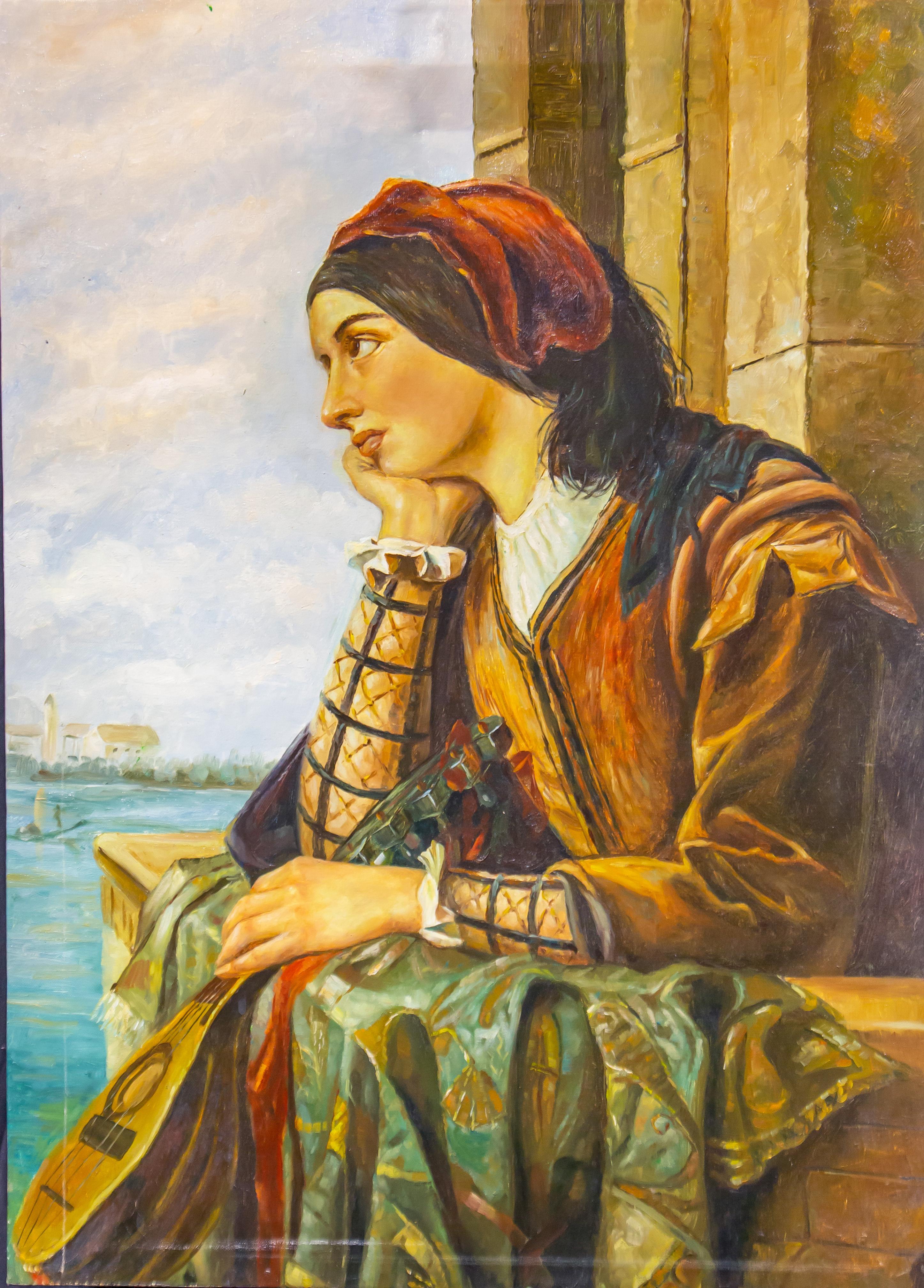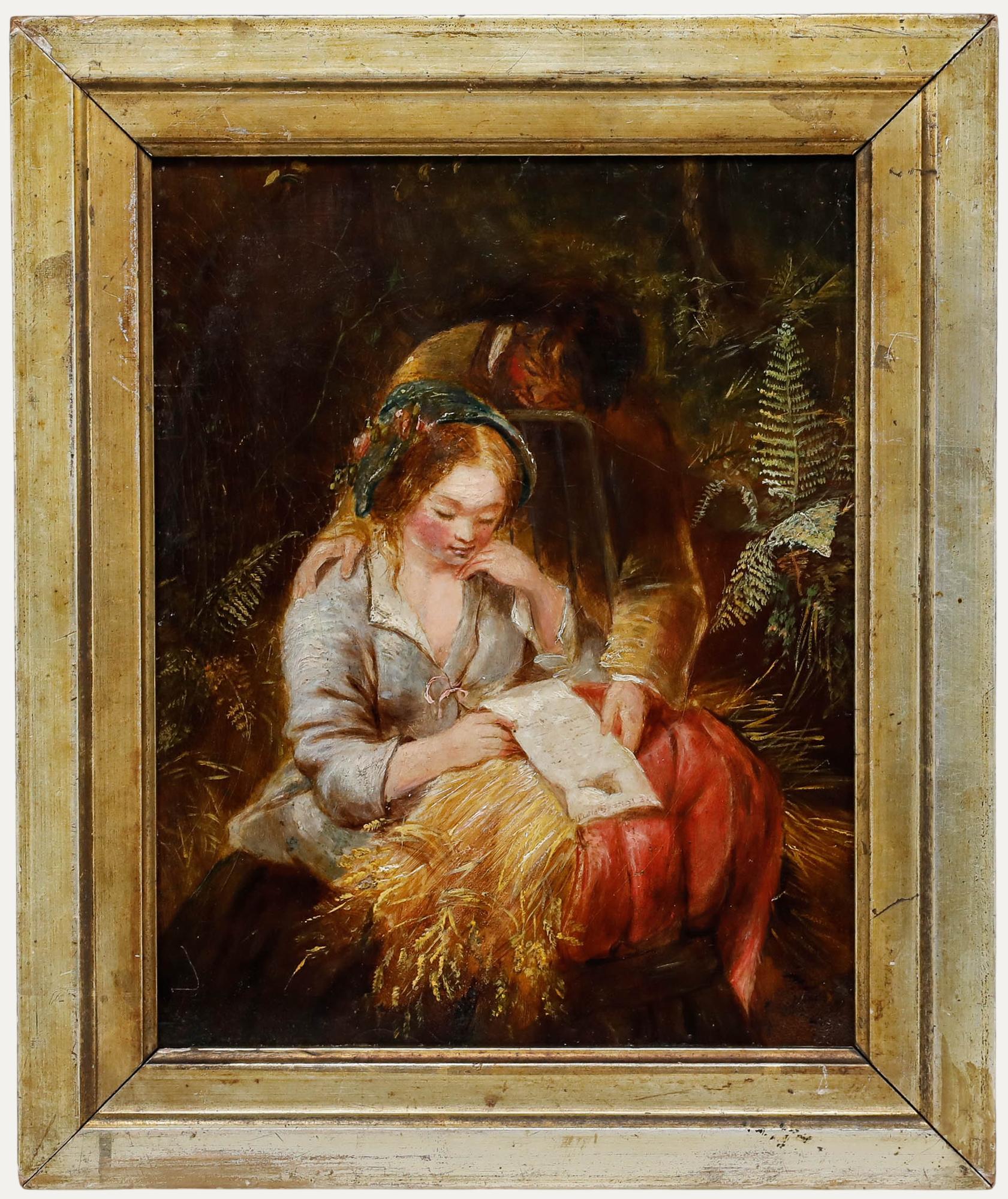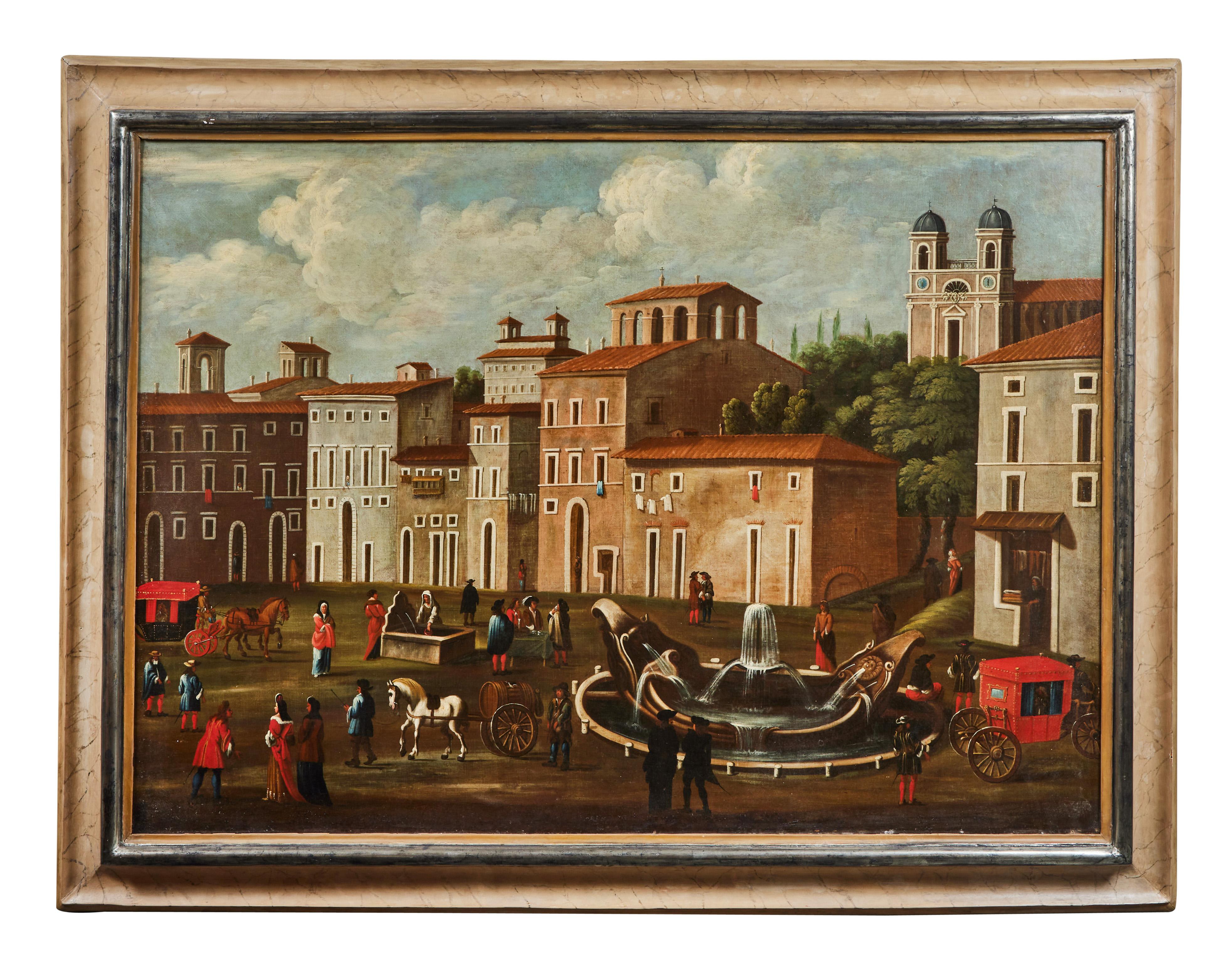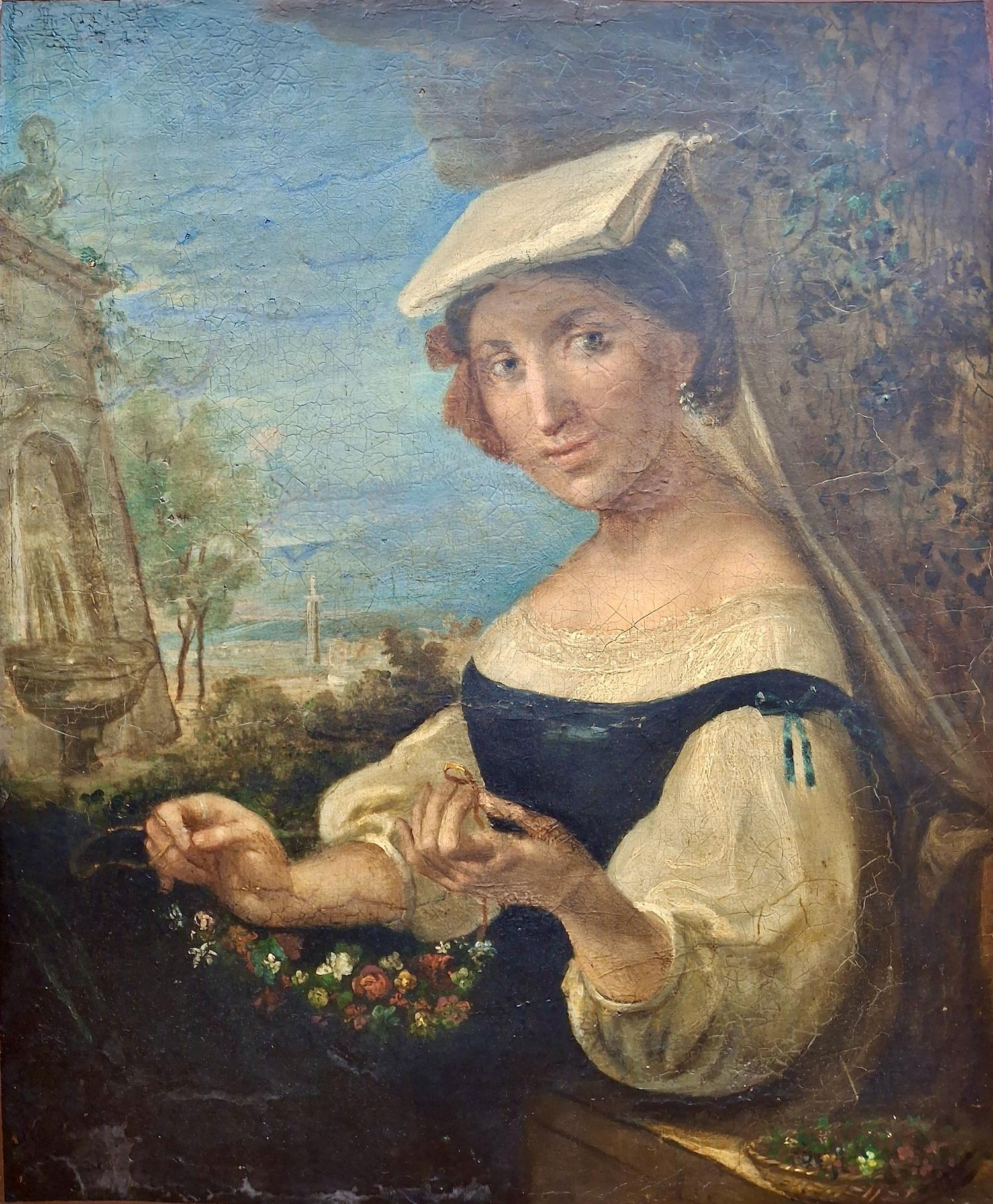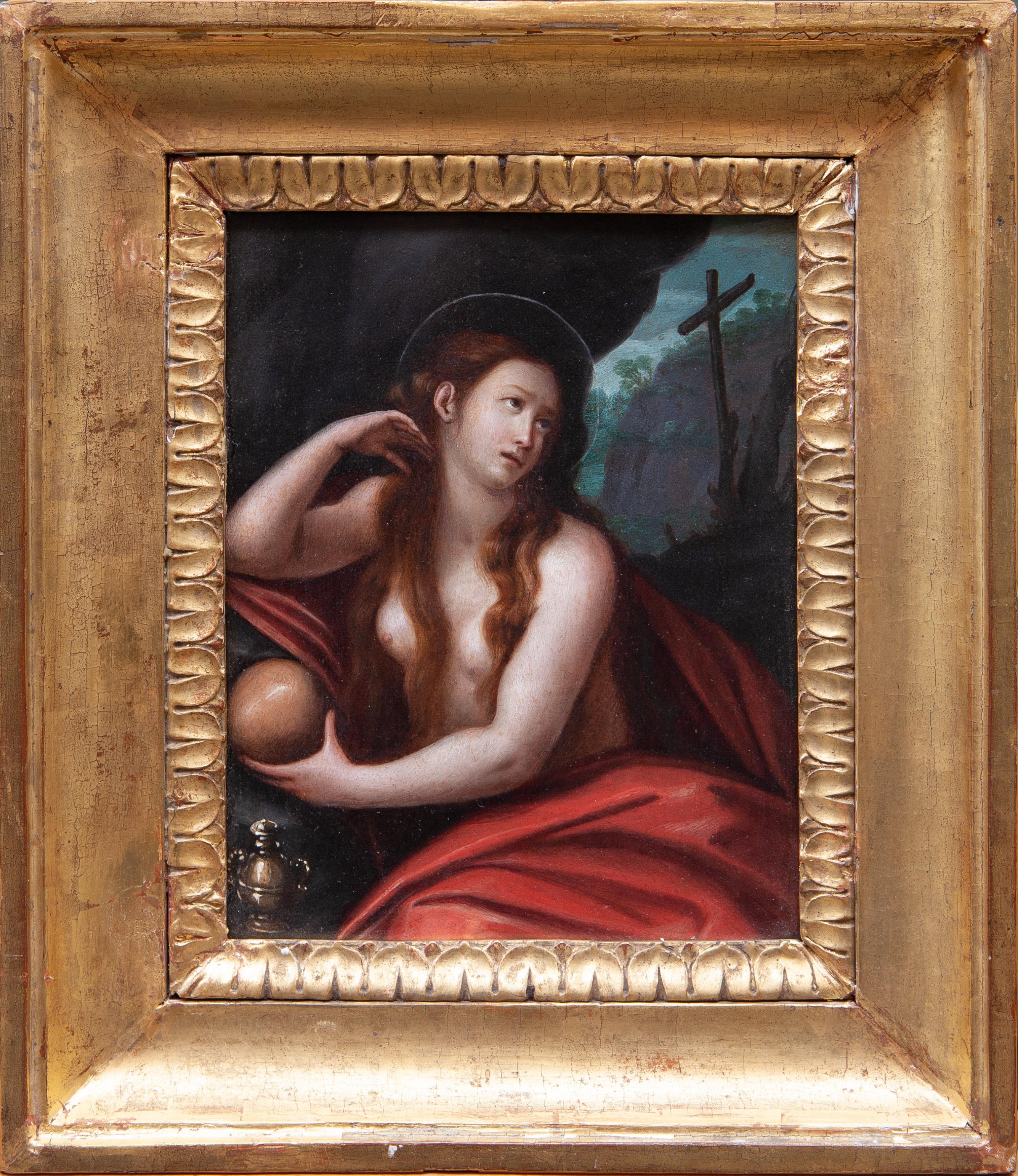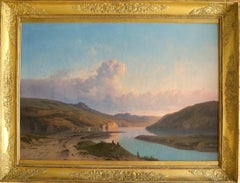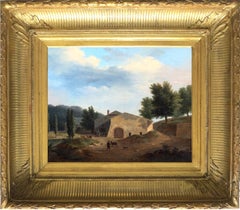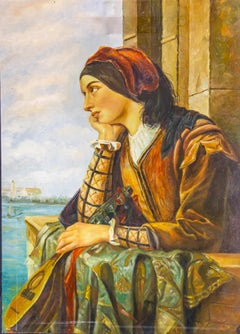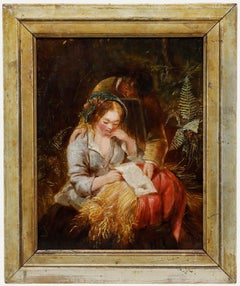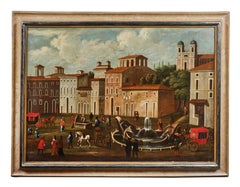Want more images or videos?
Request additional images or videos from the seller
1 of 8
Dream of freedomc. 1846
c. 1846
$8,082.66
£6,019.06
€6,800
CA$11,159.21
A$12,371.63
CHF 6,501.78
MX$151,408.48
NOK 81,200.56
SEK 76,214.85
DKK 51,772.93
About the Item
Eliseo SALA, attributed to
(Milan, 1813 – Triuggio, 1879)
Dream of freedom
Oil on canvas
46 x 38 cm without frame
66x 57 with frame
Around 1846
Related work: La toeletta del mattino (1846) – Private collection in London
Eliseo Sala was born in Milan on 2 January 1813, the son of Francesco, a grocer, and Teresa Delmati, a wealthy landowner who died the same day from complications related to childbirth. In 1821, after the death of his father, he was entrusted to the guardianship of his uncle Alessandro De Capitani d'Arzago. After completing his studies at the S. Alessandro high school, he was hired in 1830 as an apprentice in a grocery store near the Teatro alla Scala. In 1832, encouraged by the Marquis Antonio Brusca, who became his first patron, he enrolled at the Academy of Fine Arts in Brera, where his teachers were Carlo Amati for the architecture course and Giuseppe Sogni for sculpture. Between 1834 and 1839 he also attended the school of nudes under the direction of Luigi Sabatelli. In 1837 he presented himself for the first time at the Exhibition of Fine Arts in Brera with six portraits, while in the 1838 edition he offered four portraits and The Flagellation of Christ, the only painting with a religious subject that he had produced during his career. In 1839, having come of age and having taken possession of his parents' property, he decided to undertake a series of study trips. He first went to Venice, invited by Ferdinando Bassi, his colleague at the Academy, and made various copies of Titian during his stay in the lagoon. Then, in 1840, he arrived in Rome, where he met Francesco Coghetti and became his friend. He then traveled throughout Europe, visiting cities in England, France and the Netherlands. Returning to Milan in 1841, he again exhibited several portraits and a painting with a historical subject. For over twenty years, Sala's presence at the periodic Exhibition of Fine Arts in Brera was almost constant. On 12 July 1844, Sala was appointed artistic member of the Brera Academy, with the qualification of historical painter. In September 1848, in the climate of political instability generated by the provisional government of Milan, and with the intention of expanding the circle of his clients, Sala moved to Intra, where he made numerous portraits of wealthy local entrepreneurs. Avoiding returning to Lombardy-Veneto, given his aversion to the Austrian government, he left Intra at the beginning of 1849 to settle in Turin and, in the spring, he took part in the exhibition of the Società promoter di belle Arti. At the end of the summer, after spending the holidays in Acqui Terme, he returned to Milan for a few months and, in November, he married Angiola Robecchi. Returning to Turin at the beginning of 1850, he entered the circle of Lombard exiles and became friends with Gabrio Casati, Teodoro Lechi, Carlo Cameroni, Felice Cerruti Bauduc, Count Carlo Carignani and his wife Claretta Tesio di Valloria, whose portraits he painted. In 1851, Ferdinando of Savoy, Duke of Genoa, commissioned him to paint the portrait of his wife Elisabeth of Saxony, a work that Sala sent to the Brera Fine Arts Exhibition. In September and October, together with the painters Costantino Prinetti and Felice De Vecchi, he made a trip to Europe: he was in London for the first Universal Exhibition, then went to Paris, Brussels, Cologne, Ostend and finally Geneva, visiting museums and galleries. On November 3, his son Giuseppe was born in Milan, and after the birth, his wife joined him in the Savoyard capital. In December 1854, he left for Paris to satisfy the request for two portraits desired by Emilia Sommariva Seillière. In 1855, he sent the Portrait of the Marquis Lodovico Trotti Bentivoglio to the Universal Exhibition in Paris. In the spring of 1858, in Casale Monferrato, he met and painted the portrait of the businessman Emilio Vitta, an art collector, with whom he went to Florence in 1860 to attend the entry into the city of Vittorio Emanuele II and then to follow the sovereign's travels to Bologna and Genoa. In 1863, Emilio Vitta commissioned him to paint the Portrait of Vittorio Emanuele II; the following year, the Royal Court of Appeal of Genoa asked him to make a full-length effigy of the sovereign. In 1866, he participated for the last time in the Brera Fine Arts Exhibition with the Portrait of Massimo d'Azeglio, which he sent to the Universal Exhibition in Paris in 1867. The same year Vittorio Emanuele II awarded him the title of baron. On 20 September 1872 he was appointed Knight of the Order of the Crown of Italy and a member of the executive committee of the second National Exhibition of Fine Arts in Milan. In 1877, struck by a stroke that left him crippled, he was forced to interrupt his activity. He died on 24 June 1879 in Rancate di Triuggio (Monza).
Our painting, with a similar composition, could be compared to one of the rare romantic painting by Eliseo Sala currently in a private collection in London and entitled La toeletta del mattino.
Museums: Brescia, Milan (Gal. Arte Moderna, Brera), Genoa …
- Attributed to:Eliseo Sala (1813 - 1879)
- Creation Year:c. 1846
- Dimensions:Height: 18.9 in (48 cm)Width: 14.18 in (36 cm)
- Medium:
- Movement & Style:
- Period:
- Condition:
- Gallery Location:Paris, FR
- Reference Number:Seller: T729 10 241stDibs: LU1954215963352
About the Seller
No Reviews Yet
Vetted Professional Seller
Every seller passes strict standards for authenticity and reliability
Established in 2014
1stDibs seller since 2022
13 sales on 1stDibs
- ShippingRetrieving quote...Shipping from: Paris, France
- Return Policy
Authenticity Guarantee
In the unlikely event there’s an issue with an item’s authenticity, contact us within 1 year for a full refund. DetailsMoney-Back Guarantee
If your item is not as described, is damaged in transit, or does not arrive, contact us within 7 days for a full refund. Details24-Hour Cancellation
You have a 24-hour grace period in which to reconsider your purchase, with no questions asked.Vetted Professional Sellers
Our world-class sellers must adhere to strict standards for service and quality, maintaining the integrity of our listings.Price-Match Guarantee
If you find that a seller listed the same item for a lower price elsewhere, we’ll match it.Trusted Global Delivery
Our best-in-class carrier network provides specialized shipping options worldwide, including custom delivery.More From This Seller
View AllMeditation
By Leon Lhermitte
Located in Paris, IDF
Circle of Léon Lhermitte (1844-1925)
Meditation
Oil on canvas
32 x 24 cm
This painting depicts an old man seated on a chair, his hands clasped in his lap, his gaze lowered, pensiv...
Category
Late 19th Century French School Figurative Paintings
Materials
Oil
$2,139
The model in the studio
Located in Paris, IDF
School of Jacques-Louis DAVID
The model in the studio
Oil on canvas
81 x 59 cm without frame
96 x 73 with frame
Around 1820
This seated female nude in an academic pose is painted ...
Category
Early 19th Century French School Nude Paintings
Materials
Oil
River of Italy
Located in Paris, IDF
Alphonse ROBERT
(Sèvres, 1807 – Sèvres, 1885)
River of Italy
Oil on canvas
Signed lower left
60 x 88cm
Painter on porcelain and painter on canvas, Alphonse Robert was born in Sèvr...
Category
Mid-19th Century French School Landscape Paintings
Materials
Oil
Neoclassical Landscape
By Jean-Victor Bertin
Located in Paris, IDF
Circle of Jean Victor Bertin (1767-1842)
Neoclassical Landscape
Oil on canvas
Not signed
32.5 x 40.5 cm without frame
56 x 64 cm with frame
This rural scene depicts an idealized a...
Category
Early 19th Century French School Landscape Paintings
Materials
Oil
People's woman of Venice, Italy
Located in Paris, IDF
Henri Auguste Cesar SERRUR
(Lambersart, 1794 – Lille, 1876)
People's Woman of Venice
Oil on canvas
Signed, located and dated
65 x 60 cm
Venice 1850
Exhibitions:
- Paris Salon of 1...
Category
Mid-19th Century French School Figurative Paintings
Materials
Oil
Portrait of a man
By Antoine Jean Gros
Located in Paris, IDF
French school from the beginning of the 19th century
Three-quarter bust portrait of a man
Oil on panel
28 x 21 cm
Circa 1820
This portrait of a man, typical of the French school o...
Category
Early 19th Century French School Portrait Paintings
Materials
Oil
You May Also Like
"Woman in Love"
Located in Jacksonville, FL
L'Innamorata
A beautiful hand painted oil on canvas copy of the masterpiece L'Innamorata ( Woman in Love) by Henry Nelson O'neill
27965-LU2595214974492
Category
20th Century Paintings
Materials
Paper
$900
19th Century Oil - Now Polly
Located in Corsham, GB
A charming 19th-century oil depicting a young couple reading a letter together. The artist renders the figures with rosy cheeks and captures the tender moment in warm tones. Unsigned...
Category
19th Century Figurative Paintings
Materials
Oil
unknown
Located in Los Angeles, CA
17th century oil on panel of Piazza di Spagna. Italian school. Frame later.
Category
17th Century Italian School Landscape Paintings
Materials
Oil, Panel
$34,000
Delivering a Promise to Marry
Located in San Francisco, CA
During Renaissance Italy, one way to send a message about the life-changing binding of two affluent families was to sit for a portrait like this. The finished work would then be deli...
Category
18th Century Italian School Portrait Paintings
Materials
Canvas, Oil
Penitent Magdalene - 17th century painter
Located in Como, IT
Penitent Magdalene
Italian painter of the 17th century
Oil on copper in gilt frame
Size: 22x17 cm (33x28 cm including frame)
Mary Magdalene is the repentant sinner who washed Jesus'...
Category
Mid-17th Century Figurative Paintings
Materials
Copper
Animated Italian Pysage
Located in Genève, GE
Work on wood
Plaster and wood frame in gilded empire style
44 x 50.7 x 6 cm
Category
Early 19th Century Italian School Landscape Paintings
Materials
Oil
$1,426
